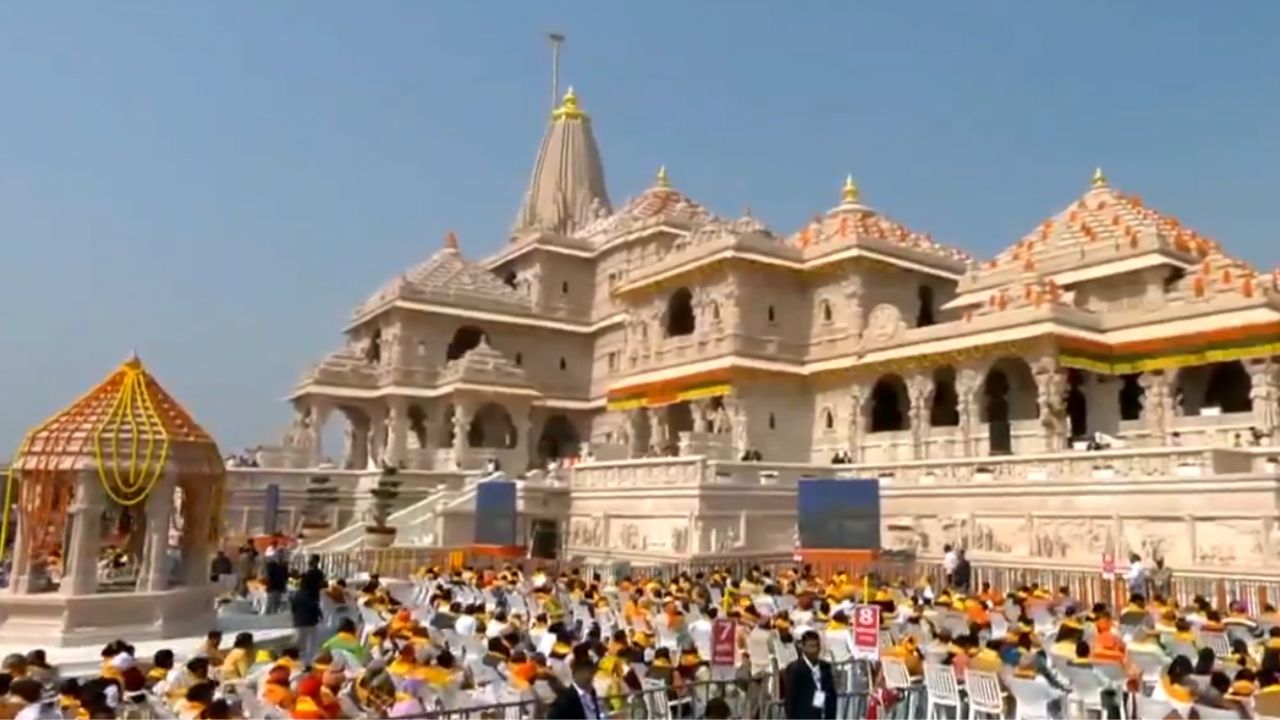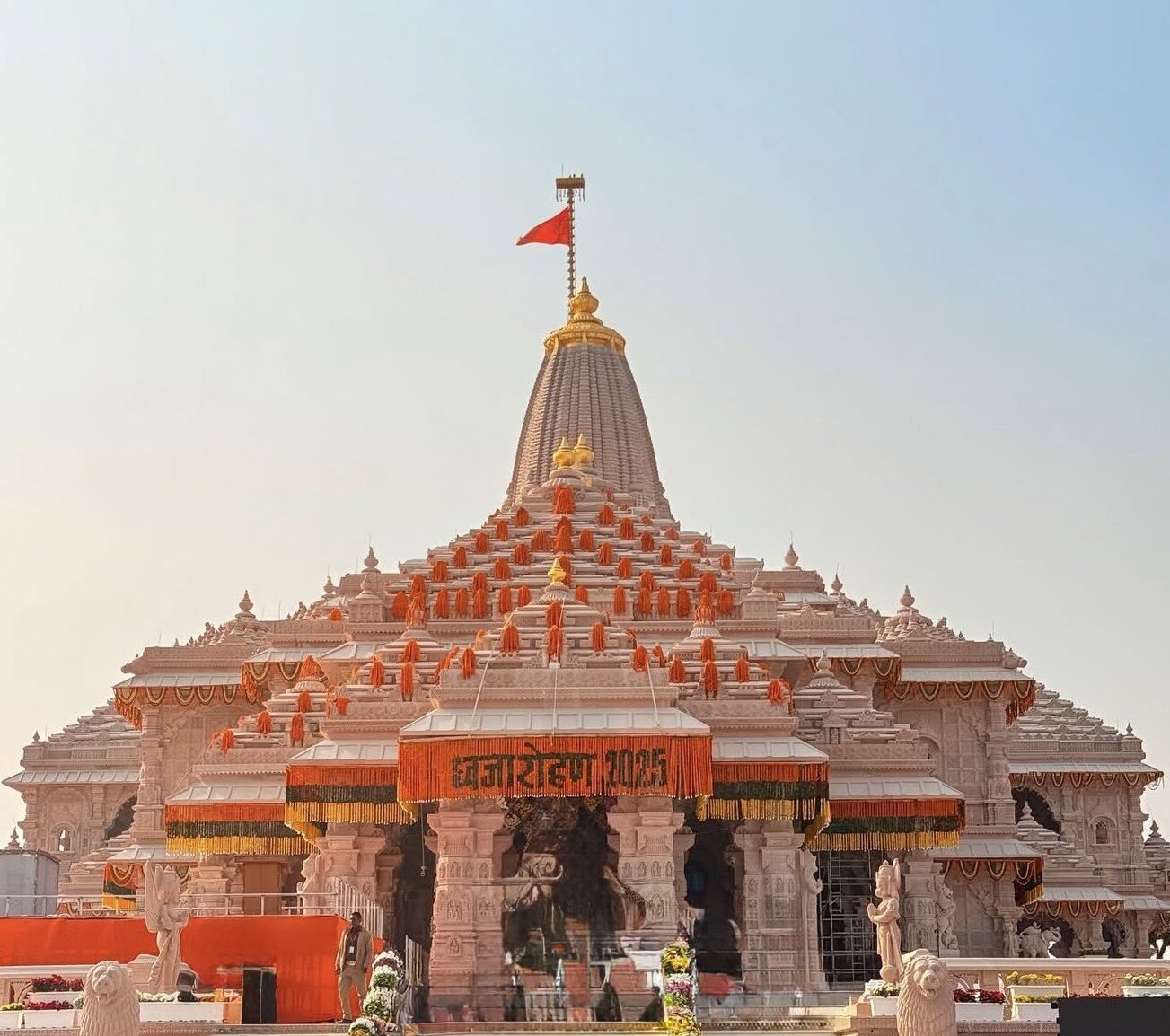 English
English

Built at a cost of approximately Rs 1,400 crore, the temple is now ready for its most significant moment. On Tuesday, Prime Minister Narendra Modi hoisted the saffron flag atop the temple’s main spire, a flag that will symbolize the rebirth of a centuries-old faith.

Ayodhya Ram Temple built at a cost of Rs 1400 Crore
Ayodhya: After five years of unwavering dedication, technology, and labor, the magnificent and divine temple of Lord Shri Ram in Ayodhya has reached completion.
Built at a cost of approximately Rs 1,400 crore, the temple is now ready for its most significant moment. On Tuesday, Prime Minister Narendra Modi hoisted the saffron flag atop the temple's main spire, a flag that will symbolize the rebirth of a centuries-old faith.
The construction of the Ram Temple has been as monumental as it is challenging. The journey, which began with the groundbreaking ceremony on August 5, 2020, has continued without a single day's pause. Rain, harsh winters, scorching heat, the COVID-19 pandemic, and technical challenges were encountered, but neither the workers' enthusiasm nor the engineers' resolve were dampened. Each test strengthened the construction.
The biggest challenge arose when the initial test piling for the temple's foundation proved technically unsuccessful. The pillars cracked under earthquake-like conditions. Experts had to redesign the entire foundation, which took six months. Following this, a new foundation was constructed using RCC (roller compacted concrete), which will ensure the structure's stability for thousands of years. Challenges such as archaeological layers discovered during excavations and the availability of high-quality stone were also addressed with indomitable willpower.

More than 4,000 craftsmen, engineers, and artisans from across the country contributed to this massive project. The day-and-night work within the temple complex, the sound of machinery, and the sacred chanting of mantras transformed the construction into a form of penance and meditation. While the world came to a standstill during the COVID-19 pandemic, the work on the Ram Temple, though limited by regulations, did not stop.
The temple's construction witnessed a fusion of technology and tradition, reflecting both the capabilities of modern India and the excellence of ancient culture. Experts from top institutions and companies such as IIT Chennai, IIT Roorkee, IIT Mumbai, ISRO, L&T, and Tata played a crucial role in ensuring the temple's strength, earthquake resistance, and longevity.
The temple's architecture is a classic example of the Nagara style. The entire structure was built without iron and steel, ensuring its longevity. Measuring 360 feet long, 235 feet wide, and 161 feet high, the temple features three floors, five pavilions, and 392 beautifully carved pillars.
The construction of the Ram Temple reached this milestone after several historic milestones:
The Supreme Court's decision in 2019,
The groundbreaking ceremony in 2020,
The consecration of Ram Lalla in 2024,
The installation of the Kalash and Ram Darbar at the summit in 2025.
Today, it stands not just as a temple, but as a living symbol of the faith, struggle, technology, and determination of millions of people.